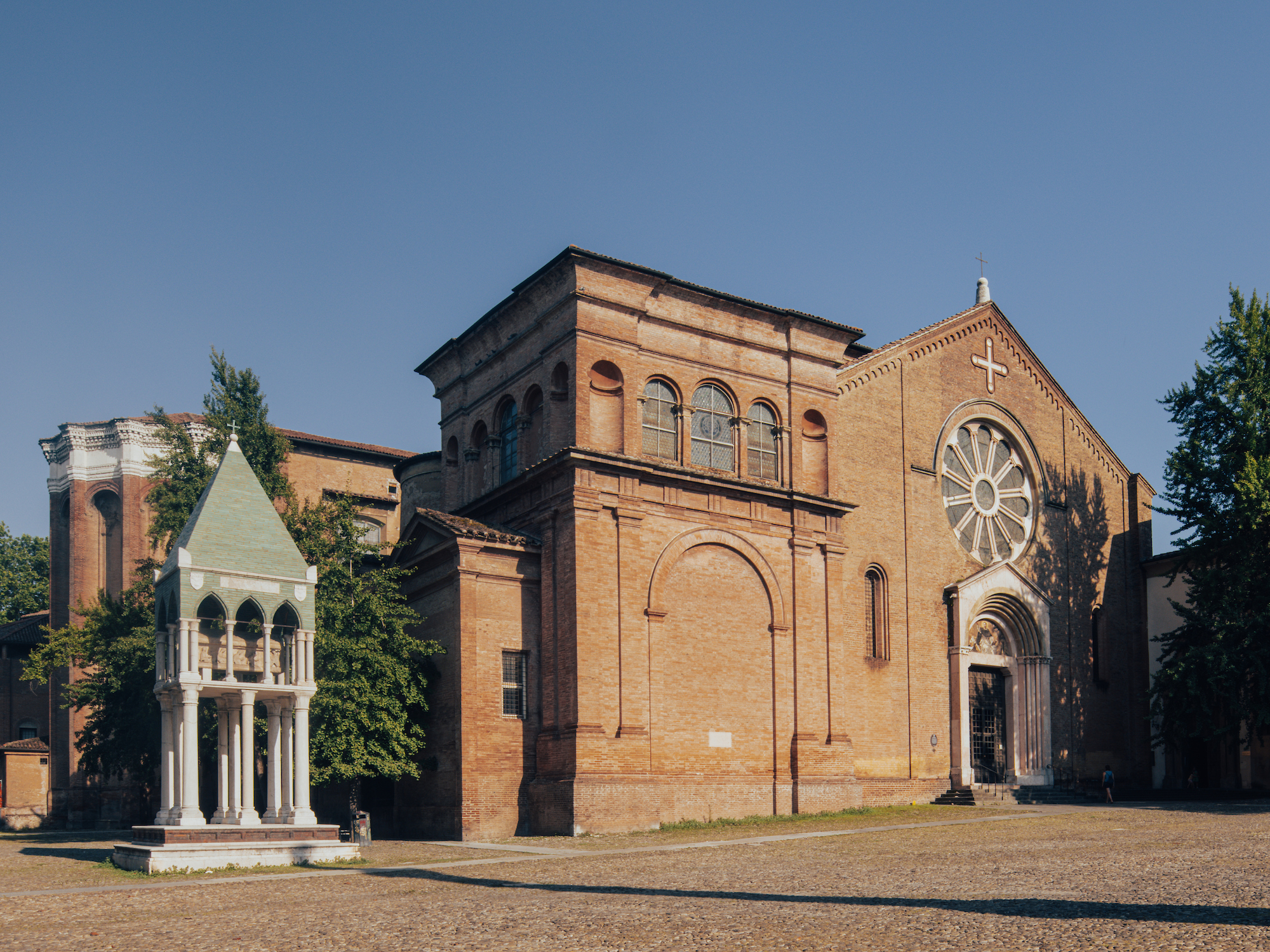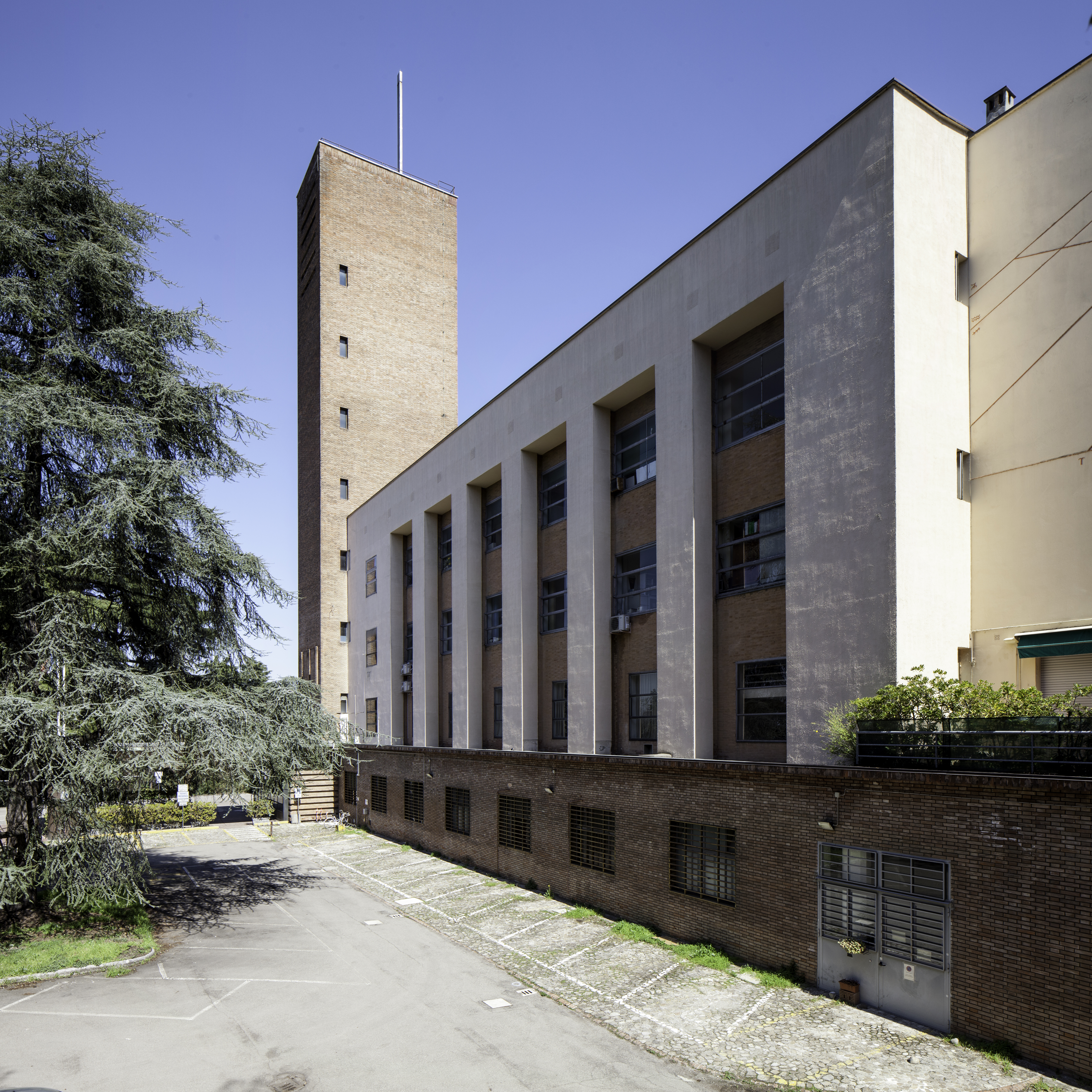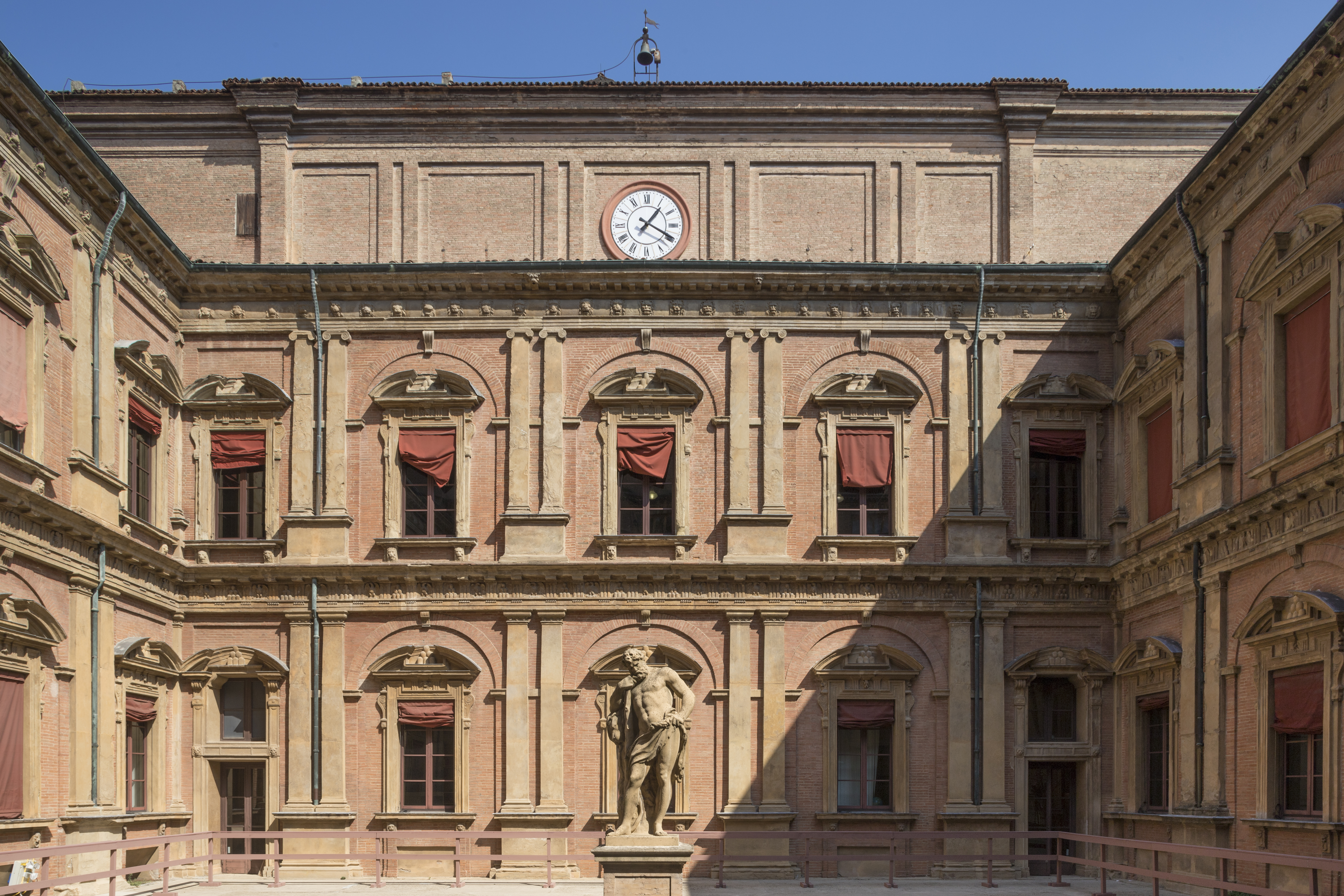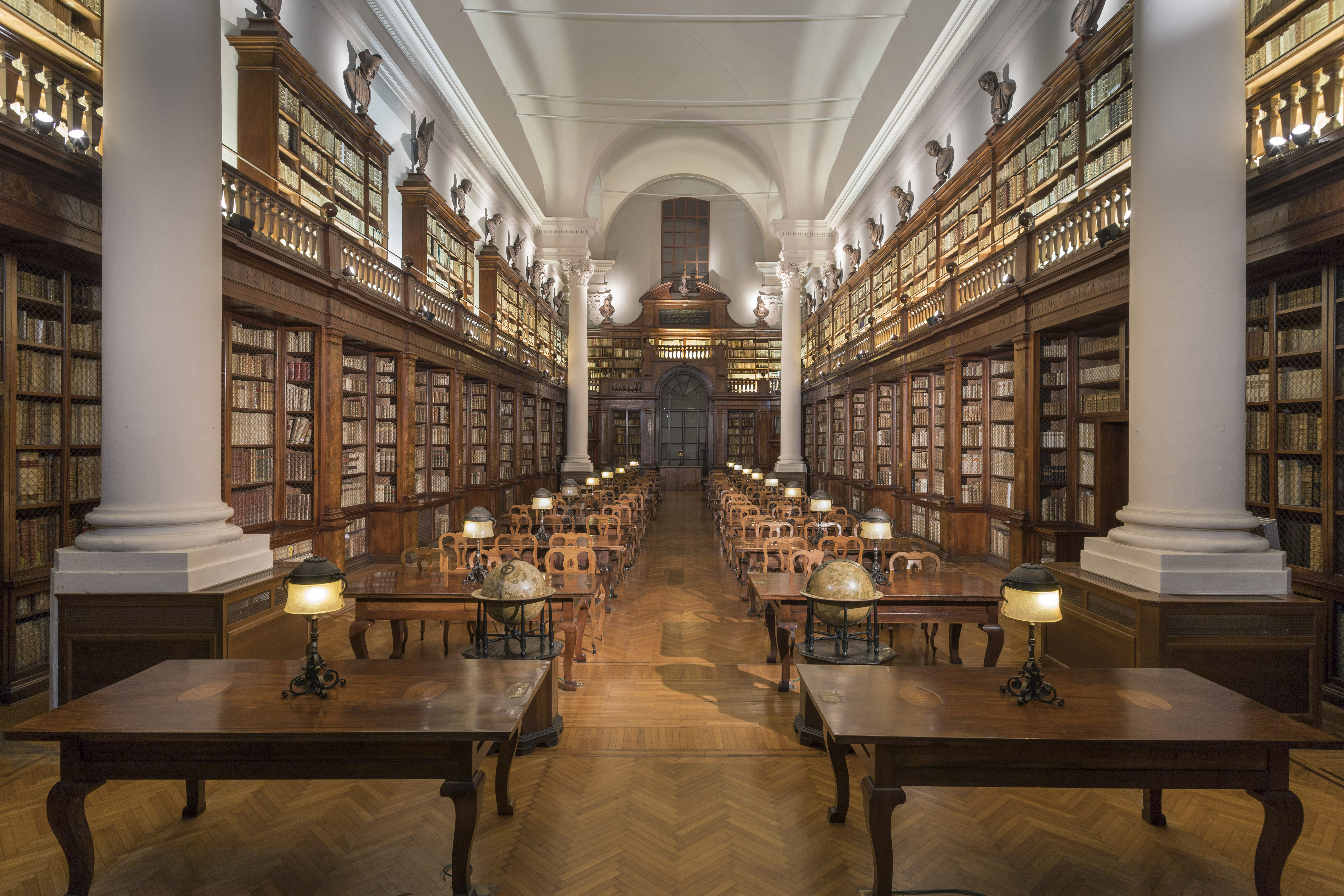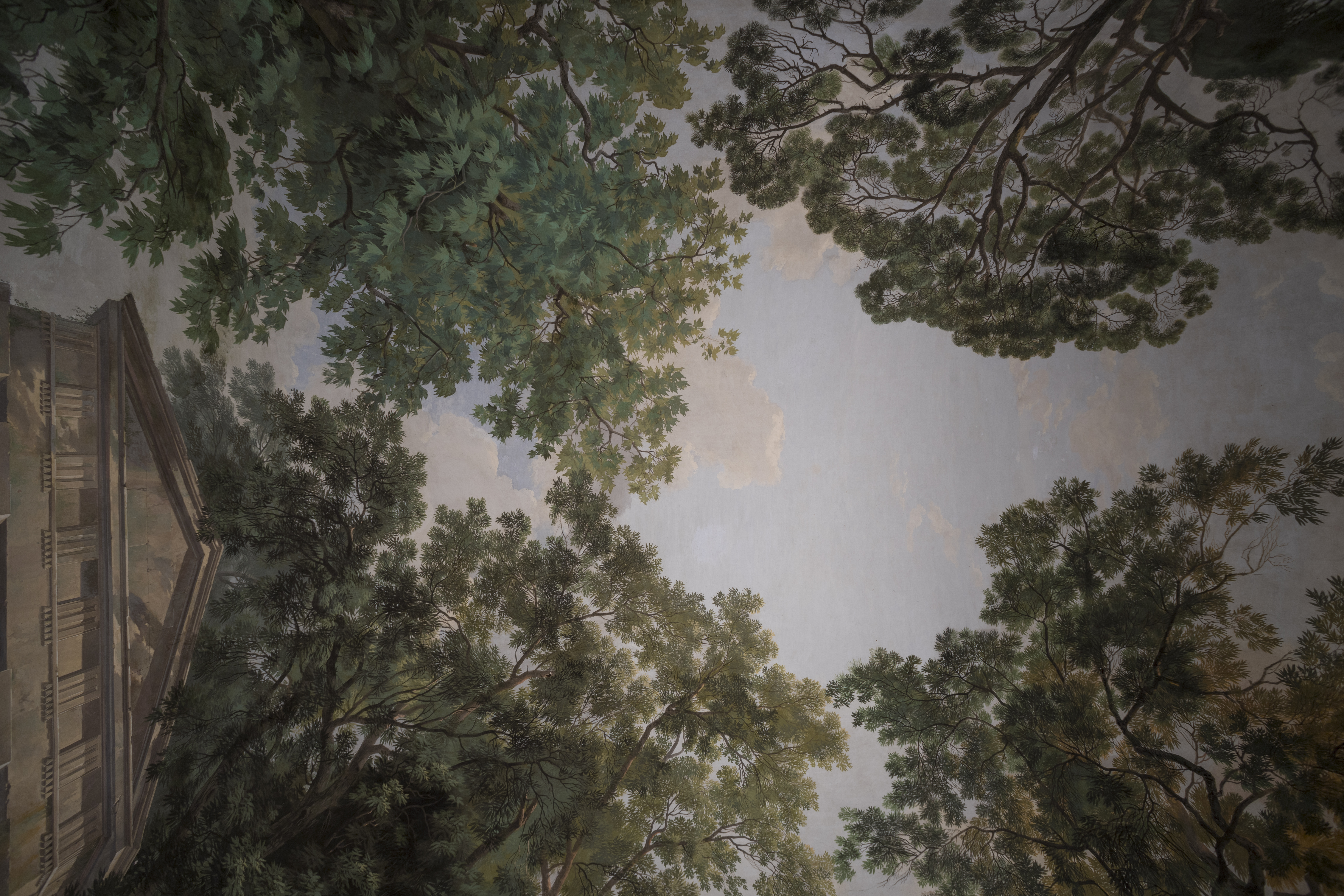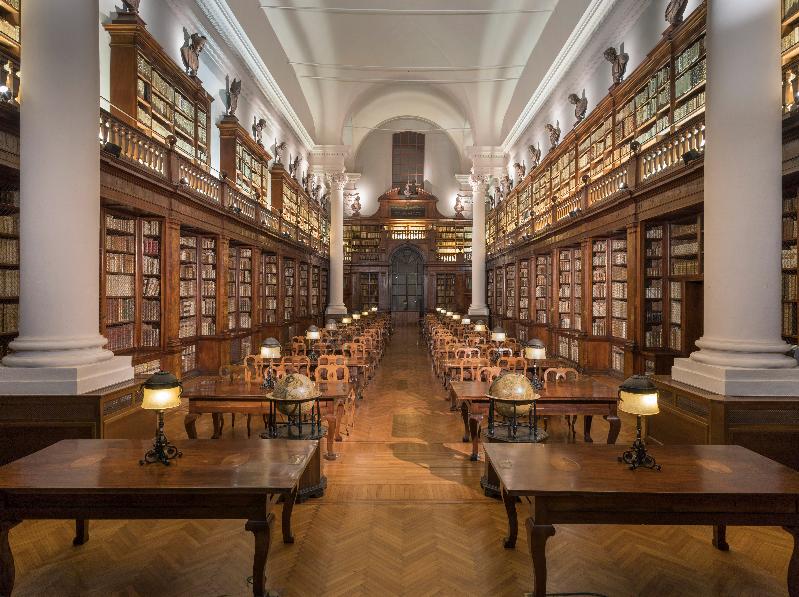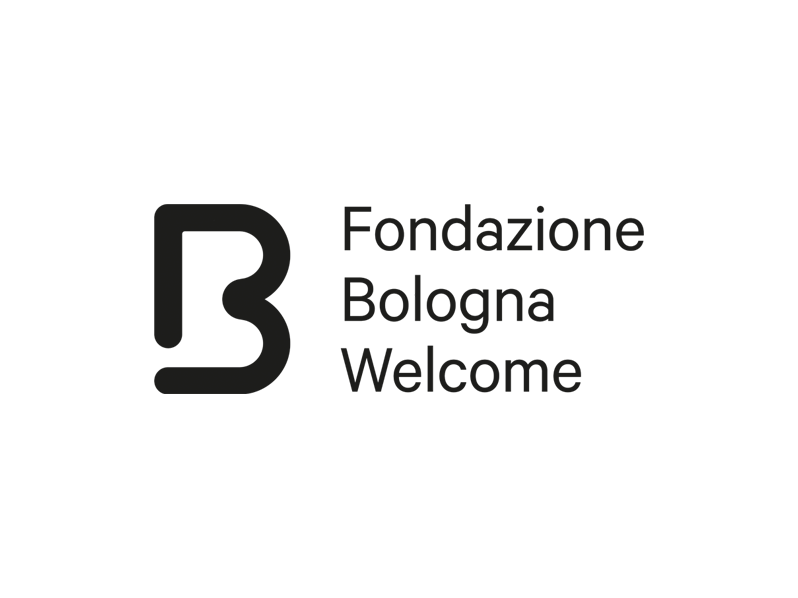Often referred to as the Learned thanks to its deeply-rooted academic tradition, Bologna is home to the oldest University of the Western World, where study and research converge into progress.
Where should our University Tour begin?
It's curious to notice that the city's most remarkable sights weren't created to pay homage to patron saints or wealthy rulers. The true recipients of such honour were actually the university professors!
Alongside the evocative low-reliefs at the Medieval Museum, other illustrious monuments can now tell of their prestige, such as the well-preserved memorial Tombs of the Glossators located in front of the Basilica of San Domenico and behind the apse of the Church of San Francesco. These venerable sepulchres were supposed to honour the first scholars of the Medieval Studium, who used to draw up glosses (notes) on ancient law writings.
Photo by P. Sorgetti
The historic building of the Engineering Department is a must-see for all lovers of contemporary architecture. This extensive complex by Giuseppe Vaccaro and Enrico de Angelis, symbol of a renewed architectural culture and fine example of Italian Rationalism was solemnly inaugurated on October 28, 1935 on the anniversary of the March on Rome. The visitor is first impressed by the imposing brick tower, a real engineering marvel of the time and originally intended as book depository.
The building's main wing, marked by broad vertical openings, houses the Aula Magna, the presidency and the administration offices, whilst the drawing classrooms are daylit by large ribbon windows. What is more, the impressive double-volume entrance hall and its shiny marble walls have been recently chosen as the picturesque setting for the movie Diabolik.
Photo by Oscar Ferrari
The city is obviously home to the Bolognese Baroque, best represented by the 16th-century Senatorial Palace Marescotti Brazzetti and the many decorative transformations it underwent starting 1680. The site's most striking feature is undoubtedly the spectacular double-flight grand staircase designed by architect Gian Giacomo Monti, a veritable theatrical space magnified by several openings and balconies inteded to accommodate the sumptuous processions and opulent ceremonies of the time. The building's main floor houses some exquisitely vaulted halls with heraldic-mythological-themed frescoes and unique stuccoes.
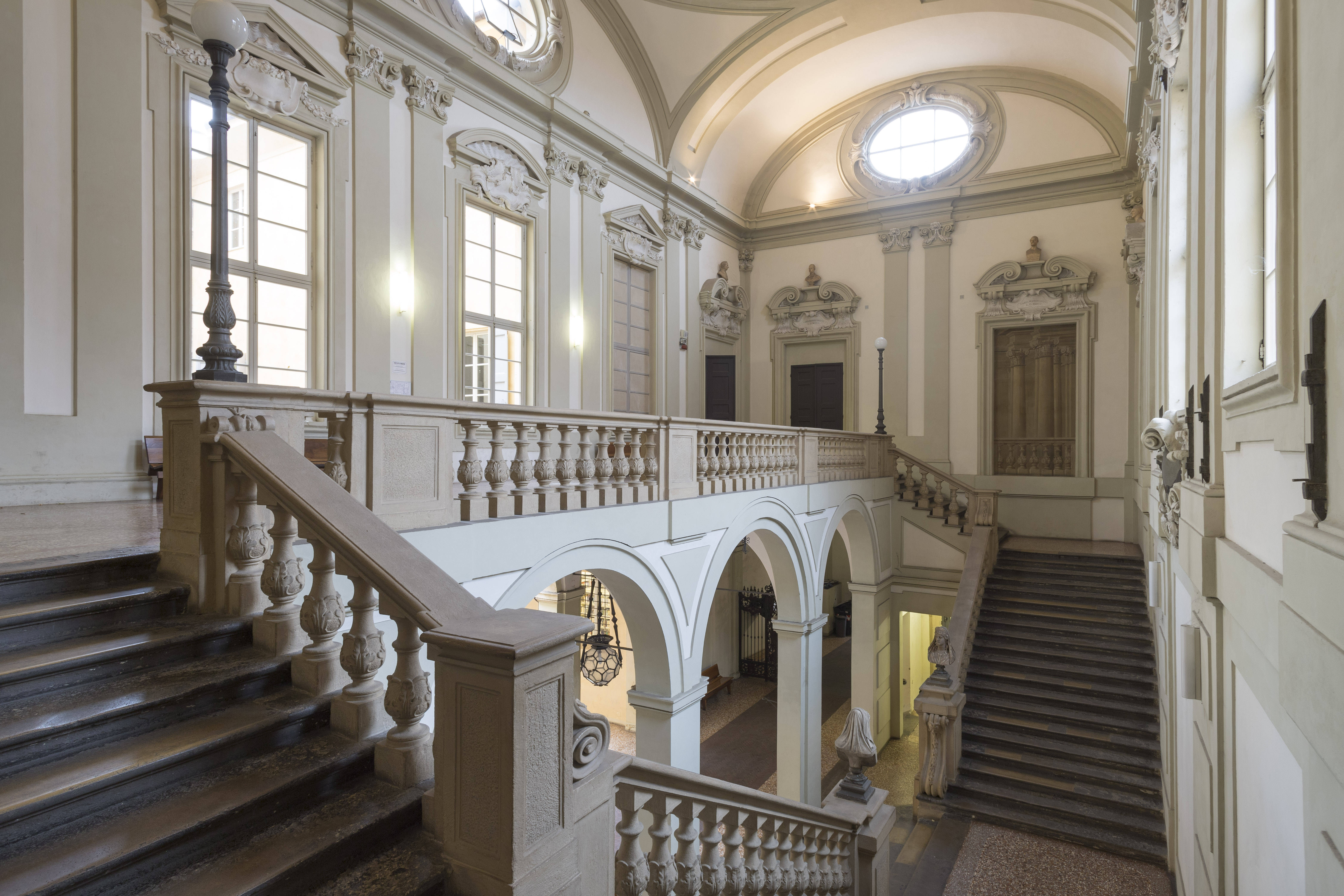
Photo by Antonio Cesari
Alma Mater eventually managed to find a permanent seat in 1563 at the Pope's behest, who transferred the University inside the Archiginnasio on the left side of the Church of San Petronio. Right over the 30 arcades of the Pavagilione Portico, were silk would be traded, the present-day halls of the Municipal Library once accommodated the numerous classrooms and offices of the Studium, all decorated with coat of arms and emblems still testifying to the building's former academic function. Moreover, don't miss the site's highlight, the 17th-century Anatomical Theatre, watched over by the vigilant wooden statues of those eminent doctors who first introduced the practice of anatomical dissection.
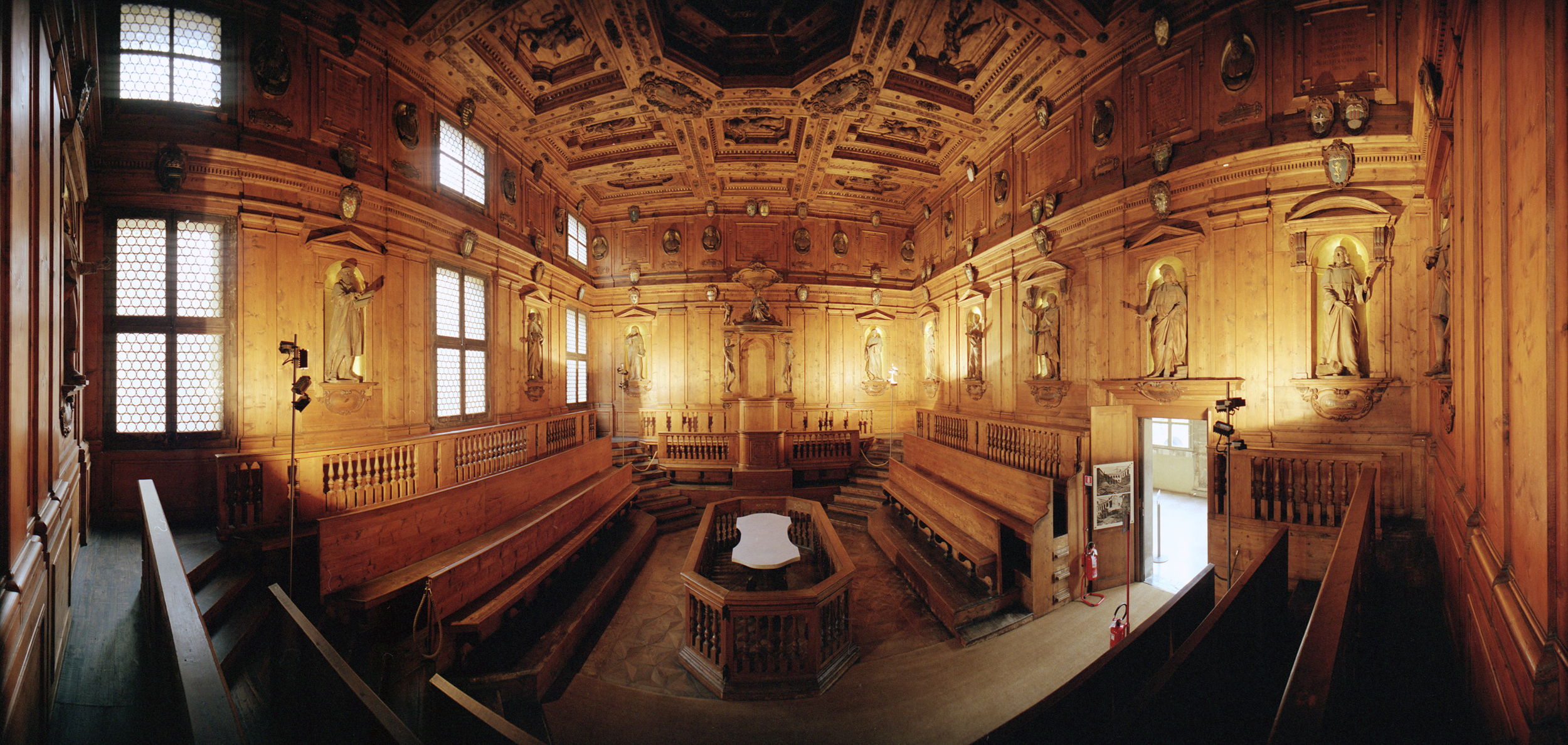
What's next?
Fancy visiting a sumtpuous
16th-century cardinal residence, the renowned seat of a 17th-century institution, a gigantic building constantly expanded over the last two centuries to be able to worthily host the University? Then stop off at
Palazzo Poggi! Its interiors are home to a true
university citadel, among scientific collections, baroque headquarters and frescoed rooms by the likes of Tibaldi, Fonatana and Niccolò dell'Abate, the whole being towered over by the imposing Specola and the breathtaking views it offers.
Photo by Antonio Cesari
If you can, also stop off at the
Biblioteca dell'Istituto di Scienze, a true temple of knowledge.
The grand hall, conceived to host the well-stocked institutional
libraria and intended by statute as public library, was designed by the same architect behind the construction of the Portico and Basilica of San Luca, Carlo Francesco Dotti (the architect of the
world's longest UNESCO portico and the
Basilica of San Luca) between 1741 and 1751. What strikes o
ur senses is the exceptional preservation of these rooms, a 36-metre long gallery punctuaded by four monumental columns and adorned by elegant burl walnut shelving units still retaining the old volumes. The illuministic layout is completed by 28 busts of illustrious men watching over the space from above and embodying the various branches of knowledge.
It's now time for the ancien régime swan song!
In 1793, construction of Palazzo Hercolani , the city's last senatorial palace, was carried out just three years before the arrival of Napoleon. The project was entrusted to architect Angelo Venturoli, a foremost representative of Palladian architecture in Bologna. The vast porticoed courtyard opens out into the grand staircase and the several neoclassical stucco statues by Giacomo de Maria, more significantly on the Labours of Hercules on the loggia dominating the scene. The building's interiors kept on being decorated until the first decade of the 19th century with the astounding stanza alla boschereccia (the woody room) on the ground floor, a masterpiece by Rodolfo Fantuzzi.
Photo by Antonio Cesari
